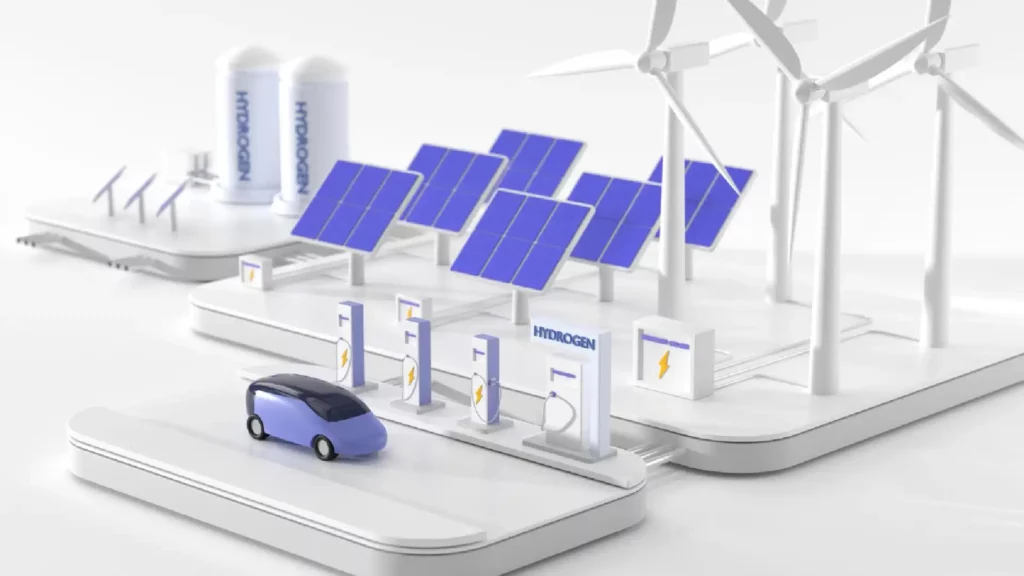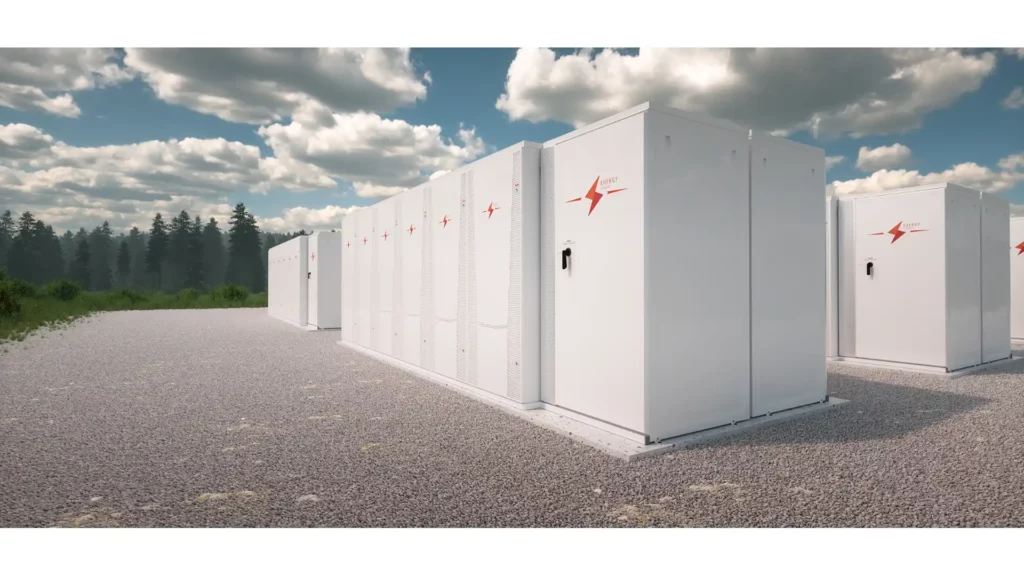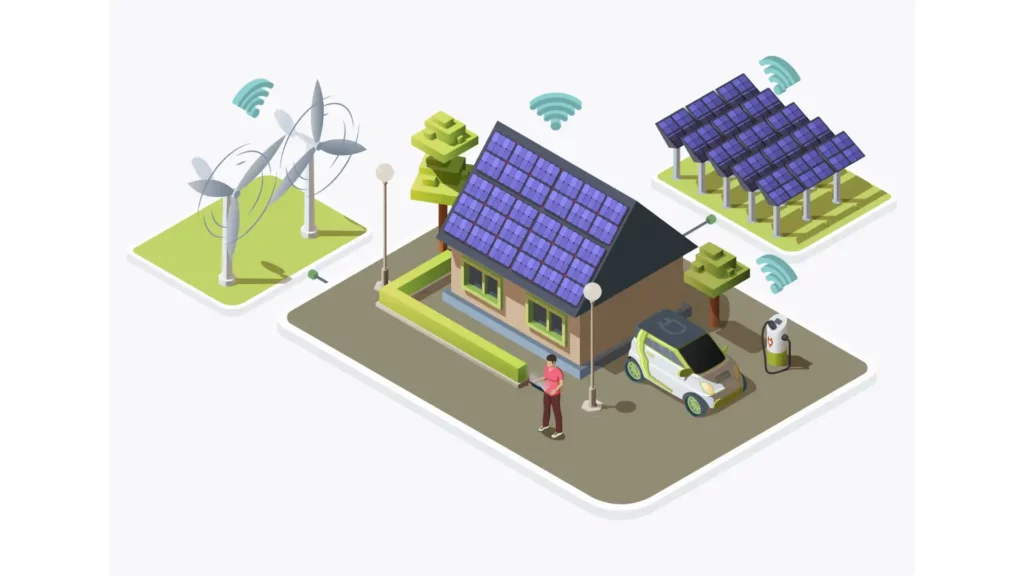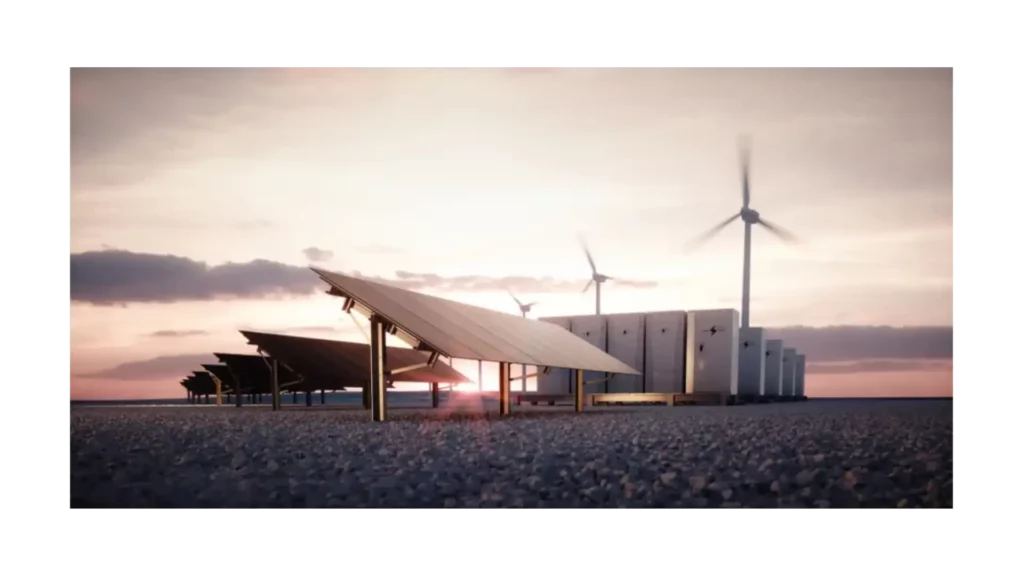In the pursuit of a sustainable energy future, the significance of Energy Storage Technology cannot be overstated.
As we move towards renewable energy sources like solar and wind, the need for efficient and scalable energy storage solutions becomes increasingly critical.
In this guide, we delve into the realm of energy storage technologies, exploring their types, applications, benefits, and future prospects.
Energy Storage Technology Overview
Energy storage technology plays a pivotal role in addressing the intermittency challenges associated with renewable energy sources.
Energy storage technology capture and store excess energy for a reliable and resilient supply. They include traditional batteries, pumped hydro storage, and thermal energy storage, offering versatile solutions to meet changing energy needs.
These technologies have the potential to revolutionize energy generation, storage, and distribution for a sustainable future.

Benefits of Energy Storage Technology
Energy storage technology offer a multitude of benefits across various sectors, ranging from enhancing grid stability to enabling the widespread adoption of renewable energy sources. Here are some key advantages:
- Grid Stability: Energy storage technology stabilize the grid by storing excess energy during low-demand periods and releasing it during peak demand, ensuring a reliable energy supply.
- Integration of Renewable Energy: Energy storage facilitates the seamless integration of renewable energy sources into the grid by storing surplus energy for use when renewable generation is low.
- Peak Load Management: Energy storage systems manage peak demand by supplying stored energy during high-demand periods, reducing strain on the grid and optimizing infrastructure use.
- Improved Efficiency: Energy storage optimizes energy use by capturing and storing excess energy, reducing waste and reliance on inefficient backup systems.
- Cost Savings: Energy storage technology reduce peak demand charges, optimize energy use, and defer infrastructure upgrades, leading to significant cost savings.
- Enhanced Resilience: Energy storage provides backup power during outages, increasing grid resilience and reliability, particularly in areas prone to extreme weather events.
- Environmental Benefits: Energy storage enables greater use of renewable energy, reducing greenhouse gas emissions and combating climate change.
- Demand Response: Energy storage participates in demand response programs, balancing supply and demand in real-time and optimizing grid operation.

Energy Storage Technologies and Applications
Energy storage technology are versatile solutions with diverse applications across various sectors.
Let's explore how energy storage technologies and applications are utilized:
- Renewable Energy Integration: Energy storage systems enable the integration of renewable energy sources into the grid by storing excess energy during peak production periods for use when renewable output is low, ensuring a stable power supply.
- Grid Stability and Resilience: Energy storage technology provide ancillary services such as frequency regulation and voltage support, enhancing grid stability and resilience by responding rapidly to fluctuations in supply and demand.
- Peak Shaving and Load Management: In commercial and industrial settings, energy storage is used for peak shaving and load management to reduce electricity costs by storing energy during off-peak hours and discharging it during peak demand periods.
- Electric Vehicles (EVs) and Transportation: Energy storage plays a crucial role in enabling the widespread adoption of electric vehicles by providing onboard batteries for energy storage and propulsion, making EVs a sustainable alternative to traditional vehicles.
- Remote and Off-Grid Applications: Energy storage technologies provide reliable electricity for residential, commercial, and industrial applications in remote or off-grid locations where access to electricity infrastructure is limited or non-existent.
- Microgrids and Distributed Energy Resources (DERs): Energy storage is central to the development of microgrids and distributed energy resources, allowing for decentralized energy generation, storage, and distribution, enhancing reliability and flexibility.
How Energy Storage Technologies Inc is Shaping Tomorrow's Energy Landscape
Energy Storage Technologies Inc. is a leading innovator in energy storage solutions. They are committed to pushing technology boundaries and developing reliable and efficient systems.
With expertise in battery technology, grid integration, and renewable energy storage, they are shaping a more resilient and sustainable energy infrastructure.

Exploring Types of Energy Storage Technologies
In the realm of energy storage, a diverse array of technologies exists, each offering unique advantages and applications.
From traditional to cutting-edge solutions, let's delve into the various types of energy storage technologies, including large-scale, grid-scale, mechanical, novel, smart grid, power system, and underground options.
- Large Scale Energy Storage Technologies
Large scale energy storage technologies are designed to store substantial amounts of energy efficiently and reliably.
These systems are typically deployed at utility-scale facilities and are crucial for balancing supply and demand on the grid.
Examples include pumped hydro storage, compressed air energy storage (CAES), and large-scale battery storage systems.
- Grid Scale Energy Storage Technologies
Grid-scale energy storage technologies are specifically tailored to meet the demands of modern power grids.
These systems provide essential services such as frequency regulation, voltage support, and load shifting to ensure grid stability and resilience.
Pumped hydro storage, flow batteries, and advanced flywheel systems are commonly used for grid-scale applications.
- Mechanical Energy Storage Technologies
Mechanical energy storage technologies rely on the conversion of electrical energy into mechanical energy for storage and subsequent retrieval.
These systems often utilize rotating masses or hydraulic systems to store energy in the form of kinetic or potential energy.
Flywheel energy storage, pumped hydro storage, and compressed air energy storage are prime examples of mechanical energy storage solutions.
- Novel Energy Storage Technologies
Novel energy storage technologies represent the cutting edge of innovation in the field.
These emerging solutions leverage advanced materials, novel designs, and innovative concepts to overcome existing limitations and unlock new opportunities for energy storage.
Examples include solid-state batteries, metal-air batteries, and hydrogen-based storage systems.

- Smart Grid Energy Storage Technologies
Smart grid energy storage technologies integrate with intelligent grid systems to optimize energy use, enhance grid stability, and enable demand response capabilities.
These systems leverage advanced control algorithms and communication protocols to dynamically adjust energy storage operations based on real-time grid conditions.
Lithium-ion batteries, flow batteries, and advanced control systems are key components of smart grid energy storage solutions.
- Power System Energy Storage Technologies
Power system energy storage technologies are tailored to meet the specific requirements of power generation, transmission, and distribution systems.
These solutions play a critical role in improving system reliability, integrating renewable energy sources, and enhancing overall grid performance.
Battery energy storage systems, pumped hydro storage, and supercapacitors are commonly deployed in power system applications.
- Underground Energy Storage Technologies
Underground energy storage technologies utilize subsurface reservoirs or geological formations to store energy in various forms.
These solutions offer advantages such as high energy density, minimal land footprint, and reduced visual impact compared to above-ground storage options.
Underground pumped hydro storage, compressed air energy storage in caverns, and hydrogen storage in salt caverns are examples of underground energy storage technologies.

Energy Storage Technologies for High Power Applications
When it comes to applications requiring high power output, specialized energy storage technology are essential to meet the demand for rapid charge and discharge rates, grid stabilization, and other high-power requirements.
Let's explore the characteristics and applications of energy storage technologiest optimized for high-power applications.
Characteristics of High Power Energy Storage Technologies:
- Rapid Charge/Discharge Rates: High power energy storage systems are designed to deliver and absorb energy at a rapid rate, allowing for quick response to fluctuations in demand or generation.
- High Power Density: These systems prioritize high power density, enabling them to provide significant power output within a compact footprint.
- Scalability: Flexibility and scalability are crucial for high power applications, allowing for the deployment of multiple units to meet varying power demands.
Types of Energy Storage Technologies for High Power Applications:
- Supercapacitors: Supercapacitors, also known as ultracapacitors, are electrochemical energy storage devices capable of delivering high power output and rapid charge/discharge cycles. They are particularly well-suited for applications requiring frequent and rapid energy fluctuations, such as regenerative braking in electric vehicles and grid stabilization.
- Flywheel Energy Storage: Flywheel energy storage systems store energy in the form of rotational kinetic energy, offering high power output and rapid response times. They are commonly used in applications such as grid frequency regulation, uninterruptible power supplies (UPS), and short-duration energy storage for critical facilities.
- Battery Energy Storage Systems (BESS) with High Power Capability: While many battery technologies prioritize energy density, some battery chemistries are optimized for high power applications. Lithium-ion batteries with advanced electrode materials and designs can deliver high power output, making them suitable for grid stabilization, load leveling, and peak shaving applications.
Applications of High Power Energy Storage Technologies:
- Grid Stabilization: High power energy storage systems play a crucial role in grid stabilization by providing rapid response to fluctuations in supply and demand, helping to maintain grid frequency and voltage within acceptable limits.
- Frequency Regulation: Frequency regulation is essential for maintaining the stability of the grid, particularly in systems with high levels of renewable energy integration. High power energy storage technology can provide rapid frequency response to balance generation and demand fluctuations.
- Electric Vehicle Fast Charging: In the realm of electric vehicles, high power energy storage systems enable fast charging capabilities, reducing charging times and enhancing the convenience and accessibility of electric vehicle charging infrastructure.

Electricity Energy Storage Technology Options
Electricity energy storage technology options encompass a wide array of solutions designed to capture, store, and distribute electrical energy efficiently.
These technologies play a crucial role in balancing supply and demand, optimizing grid operations, and enabling the integration of renewable energy sources into the electricity grid.
- Battery Storage Systems
These systems use electrochemical reactions to store and release energy efficiently. Lithium-ion batteries are a popular example due to their high energy density, fast response times, and scalability.
- Pumped Hydro Storage
This technology utilizes the gravitational potential energy of water to store and release electricity.
Water is pumped from a lower reservoir to an upper reservoir during periods of low demand and released back down to generate electricity when demand increases.
- Flywheel Energy Storage
Flywheel systems store energy as kinetic energy in a spinning mass. They offer rapid response times, high efficiency, and long cycle life, making them suitable for applications requiring fast frequency regulation and grid stabilization.

FAQs: Energy Storage technology
Q: What are bulk energy storage technologies?
A: Bulk energy storage technologies refer to systems capable of storing large quantities of energy for extended durations. Examples include pumped hydro storage, compressed air energy storage (CAES), and large-scale battery storage systems.
Q: What are commercial energy storage technologies?
A: Commercial energy storage technologies are systems designed for use in commercial settings such as businesses, industries, and utility-scale applications. These may include lithium-ion batteries, flow batteries, and flywheel energy storage systems.
Q: What are current energy storage technologies?
A: Current energy storage technologies encompass a variety of systems currently in use for storing and managing energy. These include lithium-ion batteries, pumped hydro storage, thermal energy storage, and compressed air energy storage (CAES), among others.
Q: What are different energy storage technologies?
A: Different energy storage technologies encompass a diverse range of systems and approaches for storing and utilizing energy. These include battery storage systems, pumped hydro storage, flywheel energy storage, thermal energy storage, and hydrogen storage, among others.
Q: What are electrical energy storage technologies?
A: Electrical energy storage technology are systems designed specifically for storing electrical energy. Examples include battery storage systems, supercapacitors, and superconducting magnetic energy storage (SMES) systems.
Q: What is energy storage technology?
A: Energy storage technology refers to the various methods and systems used to capture, store, and release energy for later use. These technologies play a crucial role in balancing supply and demand, integrating renewable energy sources, and enhancing grid stability and resilience.
Q: What are Wright energy storage technologies?
A: The term “Wright energy storage technologies” seems to be a typo or a misunderstanding. If you meant “right energy storage technologies,” it may refer to selecting the appropriate energy storage solutions based on specific needs, requirements, and conditions. This could include considerations such as cost-effectiveness, scalability, efficiency, and environmental impact.
Energy Storage Technology Conclusion
Energy storage technology represent the cornerstone of a sustainable energy future, enabling the efficient integration of renewable energy sources, enhancing grid stability, and driving the electrification of transportation.
As we continue to innovate and advance these technologies, the possibilities for a cleaner, more resilient energy system are limitless.

